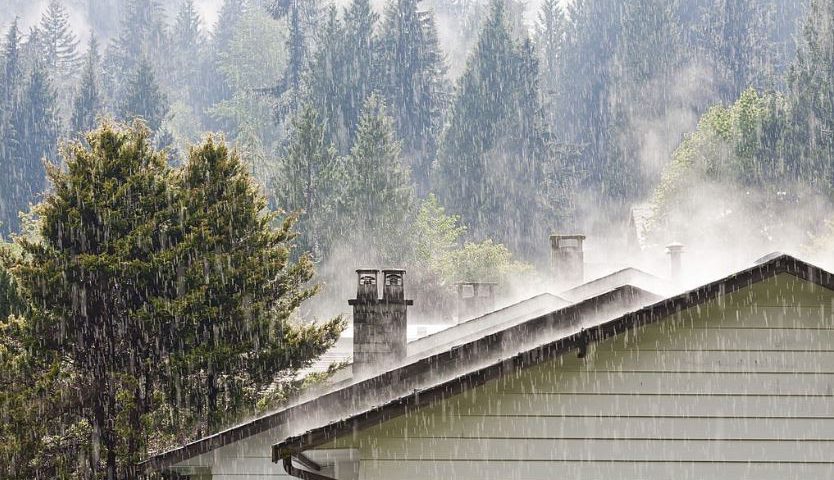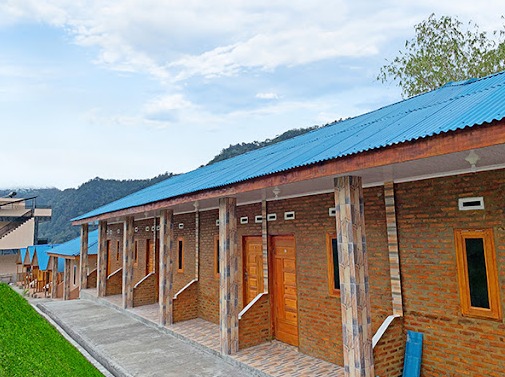Roof Care Tips with Rainwater Harvesting System: Keeping Your Roof in Top Shape

Rainwater harvesting, or rainwater collection, is one of the systems that can be installed on the roof of a house to obtain an additional water source. Maintaining a roof with a rainwater harvesting system is crucial to preserving the quality of the collected water.
Roofs are vulnerable to exposure to dirt, such as dust, leaves, branches, trash, and more. If not properly maintained, a dirty roof can negatively impact the quality of the harvested rainwater.
What Is Rainwater Harvesting System?
Before learning how to maintain a roof with this system, it’s essential to understand the definition of rainwater harvesting first. As the name suggests, this system collects and stores rainwater that falls on buildings.
The system typically consists of several components, including the roof as the surface to catch the water, gutters or pipes to channel the water into storage, and tanks or containers to hold the collected rainwater.
Moreover, some more complex rainwater harvesting systems are also equipped with filters or filtration systems to ensure the cleanliness of the collected water, as well as additional piping systems to distribute the water for various uses.
How to Implement a Rainwater Harvesting System
When it comes to implementation, there are ready-to-use rainwater harvesting systems that can be easily applied to homes and simple strategies that can be DIY projects. If you prefer to create your own rainwater harvesting system, here’s a complete guide for you:
- Clean the Roof and Storage Area
The first step in implementing a simple rainwater harvesting system is to clean the roof, which is the area where most of the rainwater will be collected and channeled. Remove any debris or materials that could contaminate the water quality. Also, don’t forget to clean the storage tank or container for collecting rainwater.
- Prepare the Water Channels
After maintaining the roof by cleaning it of any pollutants that could affect the water, the next step is to set up the piping system as the channel for water to flow toward the storage tank. Ensure that the pipes are correctly installed and capable of connecting the water channels on the roof to the storage tank. Also, check for any leaks that could result in water wastage.
- Add a Water Filter
Even though you’ve maintained the roof by regularly cleaning it, the water quality obtained may still be contaminated due to air pollution or other factors. Therefore, don’t forget to install a filter to prevent dust and other particles from entering the system.
- Include a Disinfection System
If you plan to use the harvested rainwater for drinking, bathing, or washing, adding a disinfection system to your storage tank is advisable. Disinfection is essential to eliminate bacteria, viruses, and other pathogens that may contaminate the water. Some simple alternatives for disinfection systems include adding activated carbon or using ultraviolet (UV) light. If those options seem too costly, try a chlorination system (adding chlorine).
- Install Distribution and Overflow Pipes
Finally, set up the pipe system to distribute the water to your home or building. Also, prepare an overflow pipe or channel to handle excess water to prevent the tank from overflowing due to excessive capacity.
How to Maintain a Roof with Rainwater Harvesting System
It is essential to care for the roof and other related components to ensure that the rainwater harvesting system functions properly and lasts longer. Here are some tips that you can apply:
- Clean the Roof Surface Regularly
Don’t just clean the roof when setting up the rainwater harvesting system. Ensure to maintain and clean the roof regularly to prevent the buildup of debris that could contaminate the collected water.
- Clean the Rainwater Pipes
Sometimes, heavy rainfall can carry debris like leaves, branches, or trash into the pipes. If these materials accumulate in the lines, they can block the water flow to the tank or storage container.
- Keep the Area Around the Roof Clean
To minimize debris buildup, ensure that the area around the roof is kept clean. For example, you can trim overgrown trees that might cover the roof, preventing their leaves from contaminating the harvested water.
- Check and Repair Any Damage
To properly maintain the roof and rainwater harvesting system, regularly inspect its condition. If you notice any damage or issues like leaks, address them promptly to ensure the system continues functioning effectively.
- Periodically Test Water Quality
Lastly, monitor the water quality periodically to ensure the collected water is safe. Check that the water appears visually clean and is free from contaminants like sand, moss, or debris.
If necessary, you can perform simple tests on parameters like pH. A low pH indicates acidic water, while a high pH indicates alkaline water. Ensure the pH level is within the normal range, around 7 or between 6 and 8.
The Benefits of Implementing a Rainwater Harvesting System
After learning how to install a rainwater harvesting system and the tips for maintaining it, it’s essential to understand the various benefits of implementing such a system. When viewed from different aspects, here are the multiple benefits you can obtain:
- Saving Water
Using a rainwater harvesting system, you can save clean water from other sources, such as municipal water supply or wells. The collected rainwater can be used daily, including washing, bathing, and watering plants and household needs. Over the long term, this can reduce the demand for clean water from other sources more economically.
- Obtaining Good-Quality Water for Free
By maintaining and regularly cleaning the roof, you can obtain good-quality water. Rainwater is known to be a source of clean water that does not require complicated treatment systems.
- Reducing Flood Risks
Excessive surface water flow from heavy rainfall can increase the risk of flooding. By capturing rainwater through the roof, the volume of water flowing directly to the surface can be reduced.
- Enhancing Environmental Sustainability
From an environmental perspective, utilizing rainwater through a rainwater harvesting system is a small step to contribute to environmental sustainability and preserve water availability.
One of the tips for maintaining a roof equipped with a rainwater harvesting system is to clean it regularly. If not cleaned regularly, the water quality may become compromised due to dust particles or moss growing on the roof surface.
However, certain roofing materials are known to be vulnerable to moisture exposure, which can promote the growth of moss and fungi. Therefore, use roofing materials that are resistant to moss, easy to clean, and durable, such as Djabesmen’s fiber cement roof!

Djabesmen Regains Top Brand No.1 Award for the Tenth Time
Djabesmen Won Top Brand Award
Read Post arrow_right_alt

Tips for Creating a Rooftop Garden
Planning to create a rooftop garden? Discover these valuable tips to elevate its charm and allure!
Read Post arrow_right_alt

Roof Repair Solutions for Urgent Situations
Here are some tips and emergency roof repair techniques that you can implement in critical conditions.
Read Post arrow_right_alt

Here are the Reasons Why Roofs Are Made with Corrugations
Why are roofs made with corrugations? Learn about its rationale and various benefits!
Read Post arrow_right_alt












